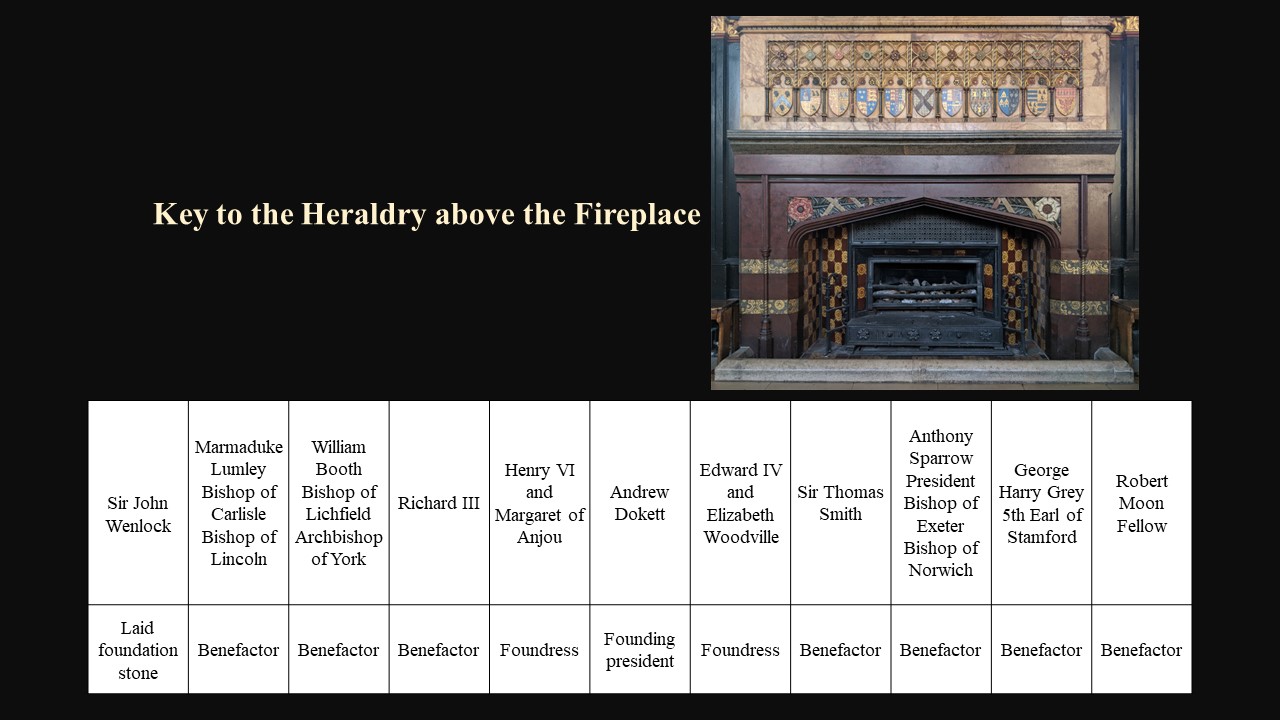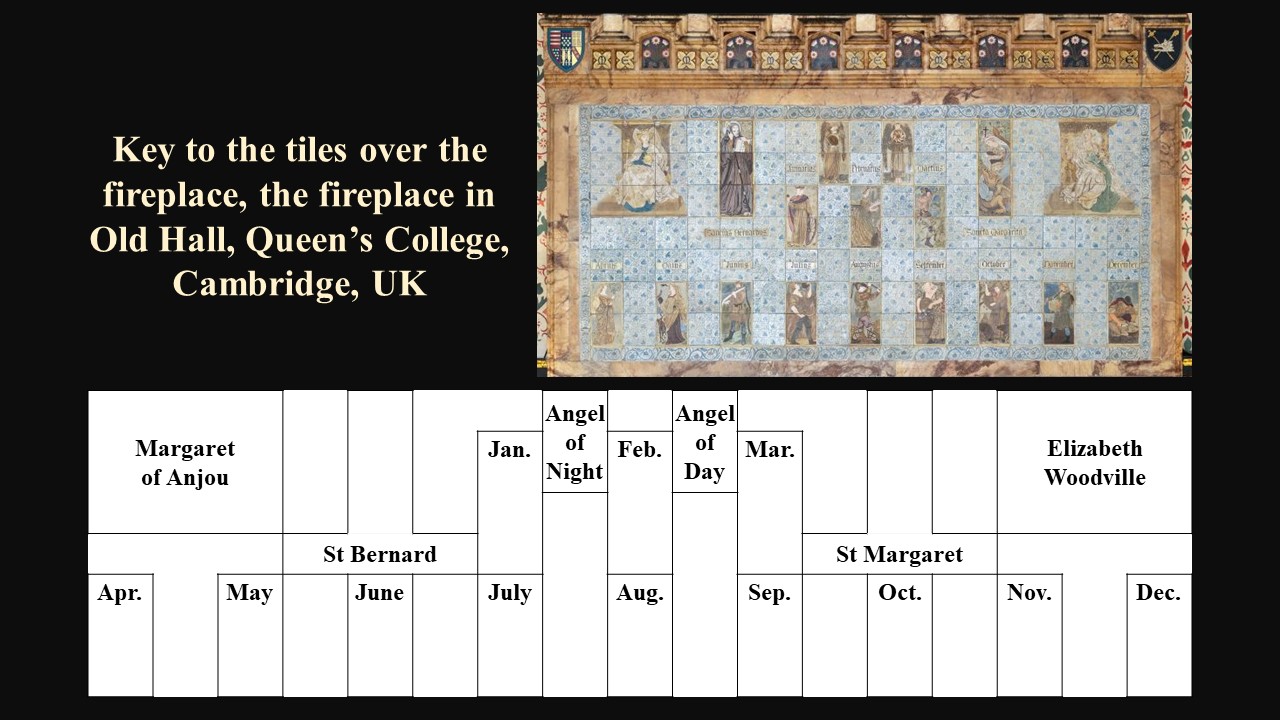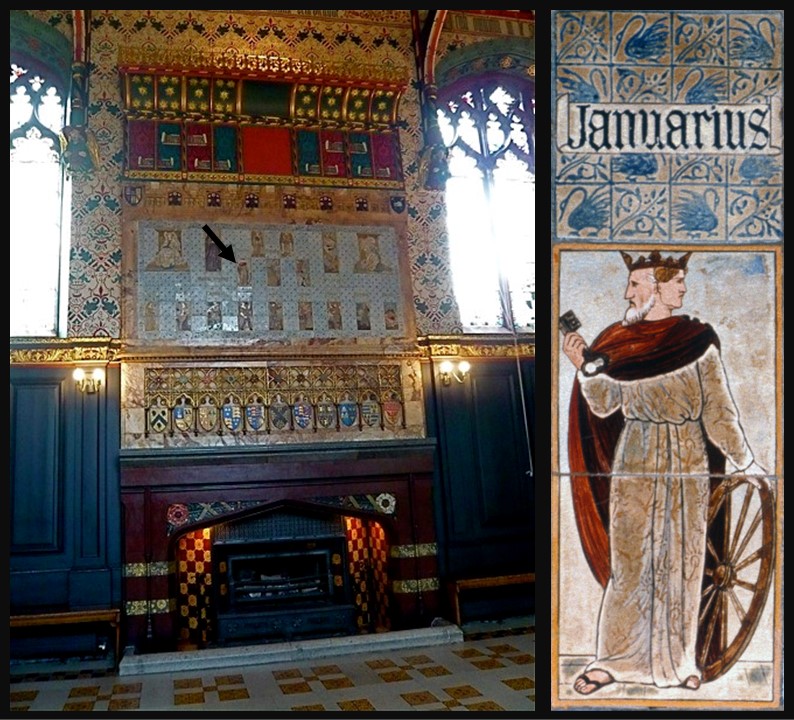
January, designed possibly by Edward Burne-Jones (1833-1898), or possibly by William Morris (1834 – 3 October 1896) https://www.queens.cam.ac.uk/visiting-the-college/history/college-facts/the-buildings/morris-co-tiles
Step into the enchanting world of this English Medieval Ballad, where each stanza unfolds the rhythm of the passing months, offering a vivid glimpse into the seasonal activities of a bygone era. The verses paint a pastoral tableau, capturing the essence of daily life through the lens of nature’s cycles… Januar By thys fyre I warme my handys; / Februar And with my spade I delfe my landys. / Marche Here I sette my thynge to sprynge; / Aprile And here I here the fowlis synge. / Maij I am as lyght as byrde in bowe; / Junij And I wede my corne well I-now. / Julij With my sythe my mede I mawe; / Auguste And here I shere my corne full lowe. / September With my flayll I erne my brede; / October And here I sawe my whete so rede. / November At Martynesmasse I kylle my swyne; / December And at Cristesmasse I drynke redde wyne… next, step into the pictorial world of the Arts and Crafts Movement and the splendid Fireplace Artistry and Overmantel Splendor at Queens’ College, in Cambridge.
Morris, Marshall, Faulkner & Co. was a notable design and decorative arts firm that operated in England during the second half of the 19th century. The company was founded in 1861 by a group of artists and designers, including William Morris, Edward Burne-Jones, Ford Madox Brown, Dante Gabriel Rossetti, Philip Webb, Charles Faulkner, and Peter Paul Marshall. The firm played a crucial role in the Arts and Crafts Movement, which emerged as a reaction to the Industrial Revolution and mass production. The firm’s influence extended beyond its immediate time, and its principles had a lasting impact on design and the decorative arts. The emphasis on quality craftsmanship and the use of natural materials became enduring themes in subsequent design movements.
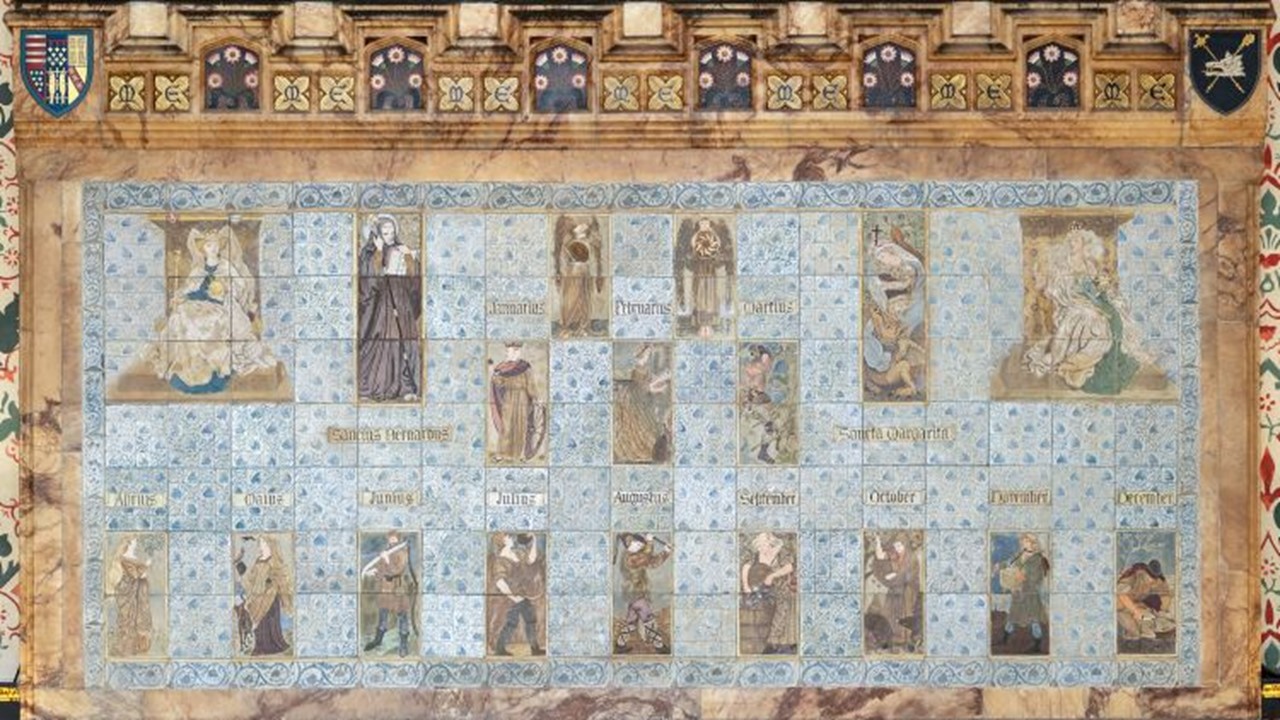
Overmantel Panel decorated with ceramic Tiles depicting the two Queens’ College foundress queens, the two patron saints, the Angel of Night, the Angel of Day, and a Labour of the Month for each of the twelve months, Installed in 1864, modified in 1873, in 1875, Old Hall, Queen’s College, Cambridge, UK https://www.queens.cam.ac.uk/visiting-the-college/history/college-facts/the-buildings/morris-co-tiles
Queens College is one of the constituent colleges of the University of Cambridge in England. The college was founded in 1448 by Margaret of Anjou, the Queen of Henry VI. The Old Hall is one of the oldest, most notable buildings within the college. It is located on the college’s main site, known as the Old Court. The Hall was originally constructed in the late 15th century and has undergone various modifications and renovations over the centuries. It serves various functions, including dining, events, and ceremonies. https://www.queens.cam.ac.uk/visiting-the-college/history/college-facts/the-buildings/old-hall-chronology
In 1861–4, the Hall’s classical fireplace was removed, and a new fireplace was erected, designed by the architect G.F. Bodley, of alabaster and tiles… the decoration of which includes a red rose (House of Lancaster: Henry VI and Margaret of Anjou), a white rose (House of York: Edward IV and Elizabeth Woodville), and the college’s motto: Floreat Domus. Painted above the fireplace, Philip Webb designed the eleven coats of arms of the college’s founders, foundresses, and benefactors. Further up, in 1864, a composition of painted tiles created by the artists of Morris, Marshall, Faulkner & Co. were installed as an overmantel decorative piece which by 1873 depicted the two foundress queens, the two patron saints, the Angel of Night, the Angel of Day, and a Labour of the Month for each of the twelve months of the year. The spaces between the represented figures are filled by tiles decorated with a swan design in blue. The tiles of this design, which appear for the first time around 1863-64, are divided by a linear grid into squares, in which a stylized swan alternates with a diagonally-placed twig. The entire tile panel is framed by a border with a foliate pattern in blue. https://www.queens.cam.ac.uk/visiting-the-college/history/college-facts/the-buildings/old-hall-chronology and https://www.queens.cam.ac.uk/files/downloads/tile_decoration_by_morris_and_co_0.pdf
According to Dr. Michaela Braesel, the popular representations of the Labours of the Months, with their lettered scrolls, were inspired by 15th-century Calendars found in Books of Hours at the University Library. The tiles produced by Morris, Marshall, Faulkner & Co. were created by various artists collaborating with the company. While some tiles can be confidently attributed to specific Company artists, the exact attribution for others, such as January, remains uncertain.
Today, on January 1, 2024, we turn our attention to the January scene, the most surprising of all the tiles featured in the Queens’ College fireplace panel. Designed either by Edward Burne-Jones or William Morris, it presents an unusual depiction within a calendar context—the ancient Roman god Janus holding a key and a wheel. Janus is associated with doorways, gates, transitions, and beginnings. Depicted with two faces, one looking forward and the other backward, this duality symbolizes his role as a god of both beginnings and endings, as well as his ability to perceive both the past and the future.
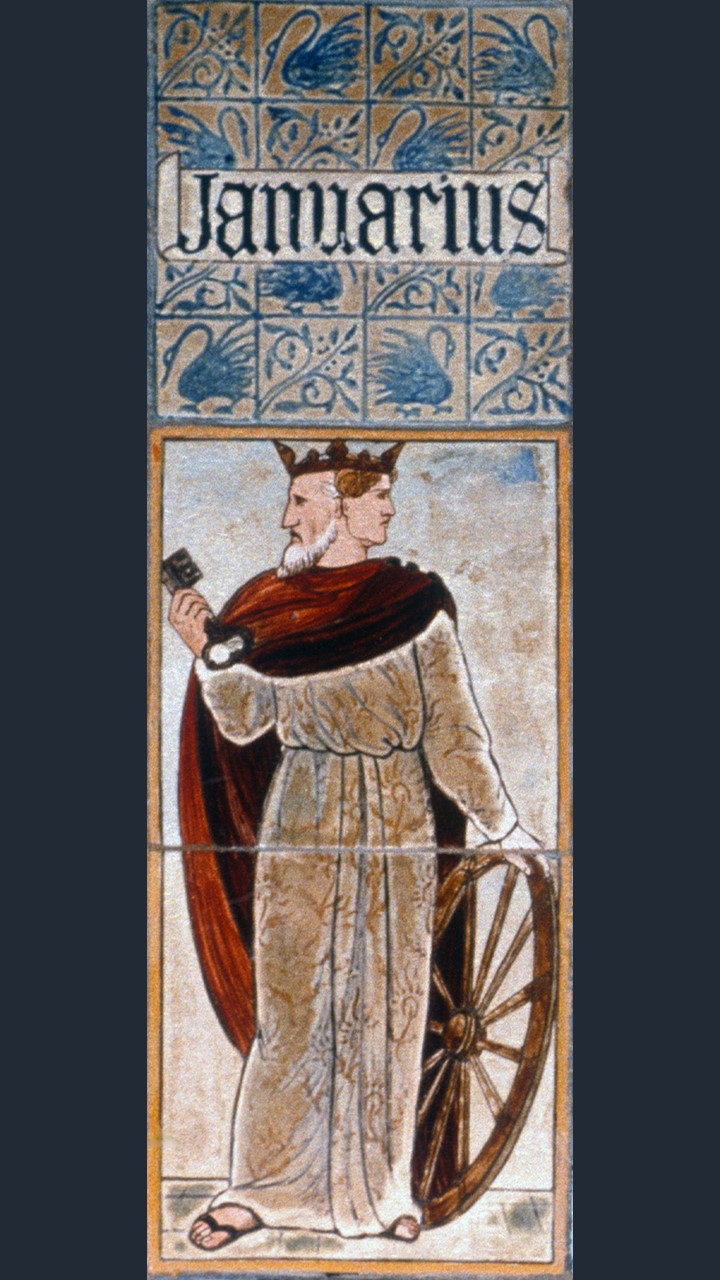
One of Janus’s two heads is turned towards the old year and is characterized as an old bearded king, while the other, which looks to the future, shows a young king in profile. In his right hand, correctly depicted by either Morris or Burne Jones, Janus holds his traditional attribute, a key, while his left hand is shown resting on a wheel. The key signifies the end of the previous year, while the wheel might possibly hint at the wheel of Fortune, since what the coming year will bring remains unknown. https://www.queens.cam.ac.uk/files/downloads/tile_decoration_by_morris_and_co_0.pdf
As a guardian of entrances and exits, Janus was invoked at the commencement of significant events and ceremonies. The first month of the year, January, is named after him. In addition to his association with time and transitions, Janus was also regarded as a god of diplomacy and peace, as he could oversee and facilitate communication between different phases or states.
Janus was perfectly chosen, in my humble opinion, to mark the beginning of the New Year. Allow me to use his attributes and wish you all… Peace, a bright Future, and a Happy New Beginning!
For a PowerPoint on all Morris, Marshall, Faulkner & Co. Tiles for the Old Hall, Queens’ College, Overmantel Fireplace Panel, fully identified and explained, please… Check Here!
